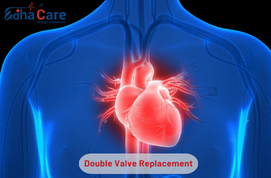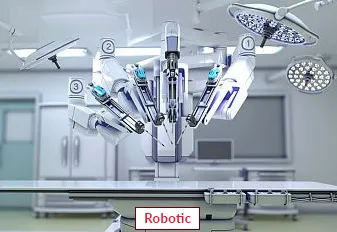Double Valve Replacement

Double valve replacement is a surgical operation executed for replacing both the aortic and mitral the valves of the heart. It is typically suggested when there is disease or damage to both valves, which can frequently be the result of rheumatic coronary artery disease, congenital abnormalities, or endocarditis. In order to restore appropriate flow of blood and cardiac function, damaged valves are eliminated during the procedure and replaced with prosthetic valves. Open cardiac surgery is necessary for double valve replacement, which carries risks including bleeding, infection, and malfunctioning of the valve. But for those with severe valve dysfunction, it can greatly enhance cardiac function and standard of life.
Book an AppointmentAbout Double Valve Replacement
Symptoms: Patients with severe damage or failure of both of the aortic and atrial valve who experience symptoms like shortness of breath, exhaustion, discomfort in the chest, heart palpitations, and feelings of fainting may benefit from a double valve replacement.
Causes: Diseases that can seriously harm or impair the functioning of both aortic and mitral valves, such as rheumatic heart illness, congenital heart abnormalities, infectious endocarditis, or degeneration valve disease, are frequently the reason for the necessity for double valve replacement.
Treatments: To relieve symptoms and enhance general heart health, double valve repair surgery entails surgically removing the diseased valves and replacing them with new prosthetic valves. This restores normal cardiac function and blood flow.
Procedure of Double Valve Replacement
Preparation: The patient has imaging scans, blood tests, and team assessments in order to get ready for surgery.
Anesthesia: To guarantee that the patient is unconscious and pain-free throughout the surgery, general anesthesia is given.
Incision: To gain direct access to the aortic and mitral valves, a sternotomy or thoracotomy incision is created to access the heart.
Removal of the Valve: The injured mitral and aortic valves are carefully removed from the heart, being cautious not to injure any nearby tissues.
Replacement of Valve: Artificial prosthetic valves are firmly stitched into the heart's order, guaranteeing correct alignment and operation.
Closure: To facilitate post-operative recuperation, any required tubes or drains are installed and the incision is stitched together.
Recovery: In the intensive care unit (ICU) or cardiac recovery unit, the patient is constantly observed, and therapy for pain management, medicine, and rehabilitation is started as needed.
Require Assistance?
Get A Quick Callback From Our Healthcare Experts
Other Specilities We Cover

Robotic Heart Bypass Surgery

Heart Bypass Surgery




